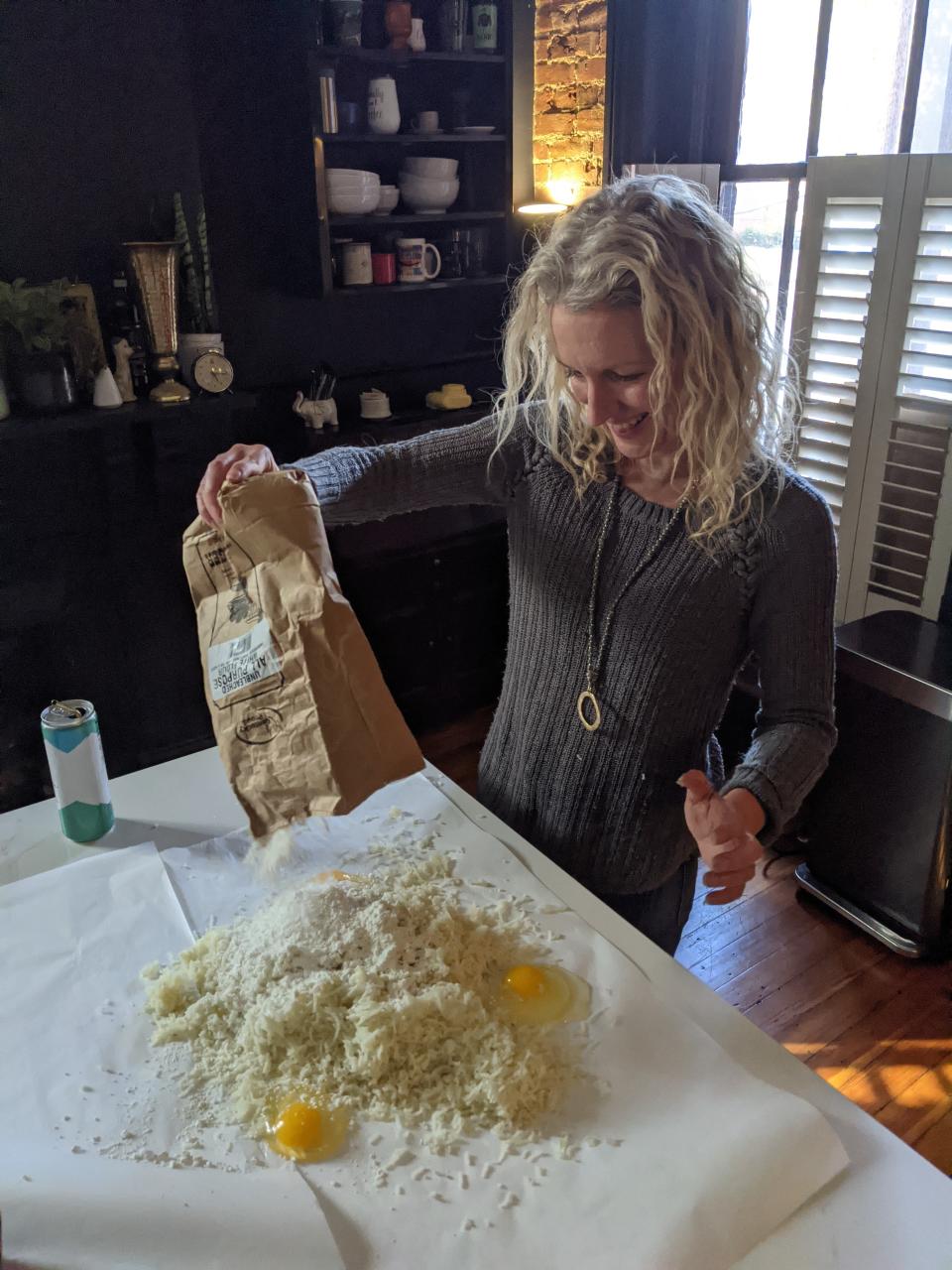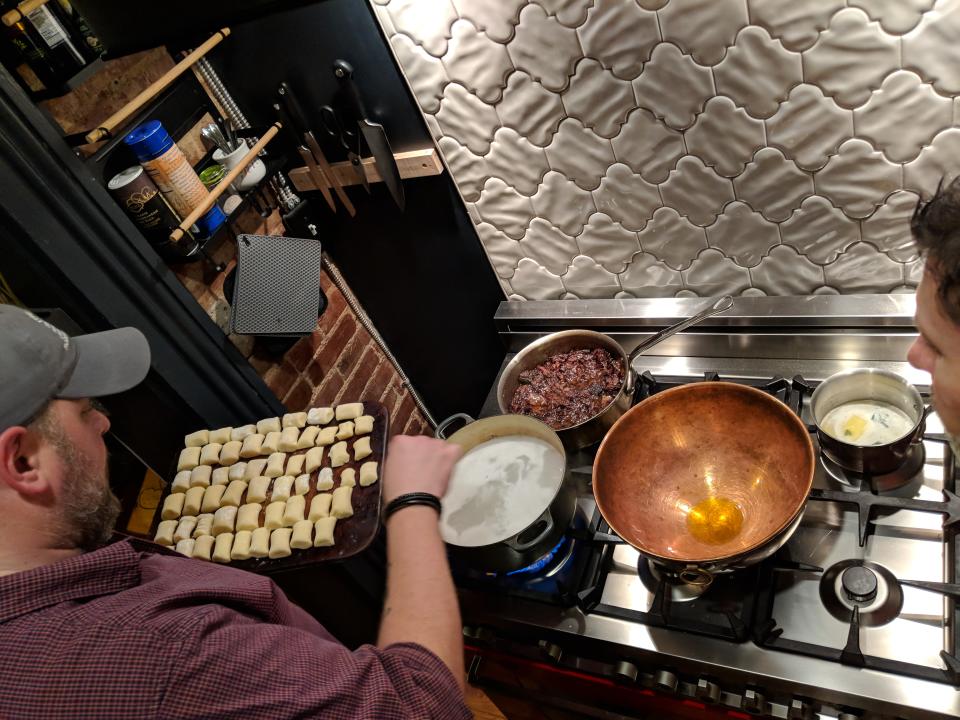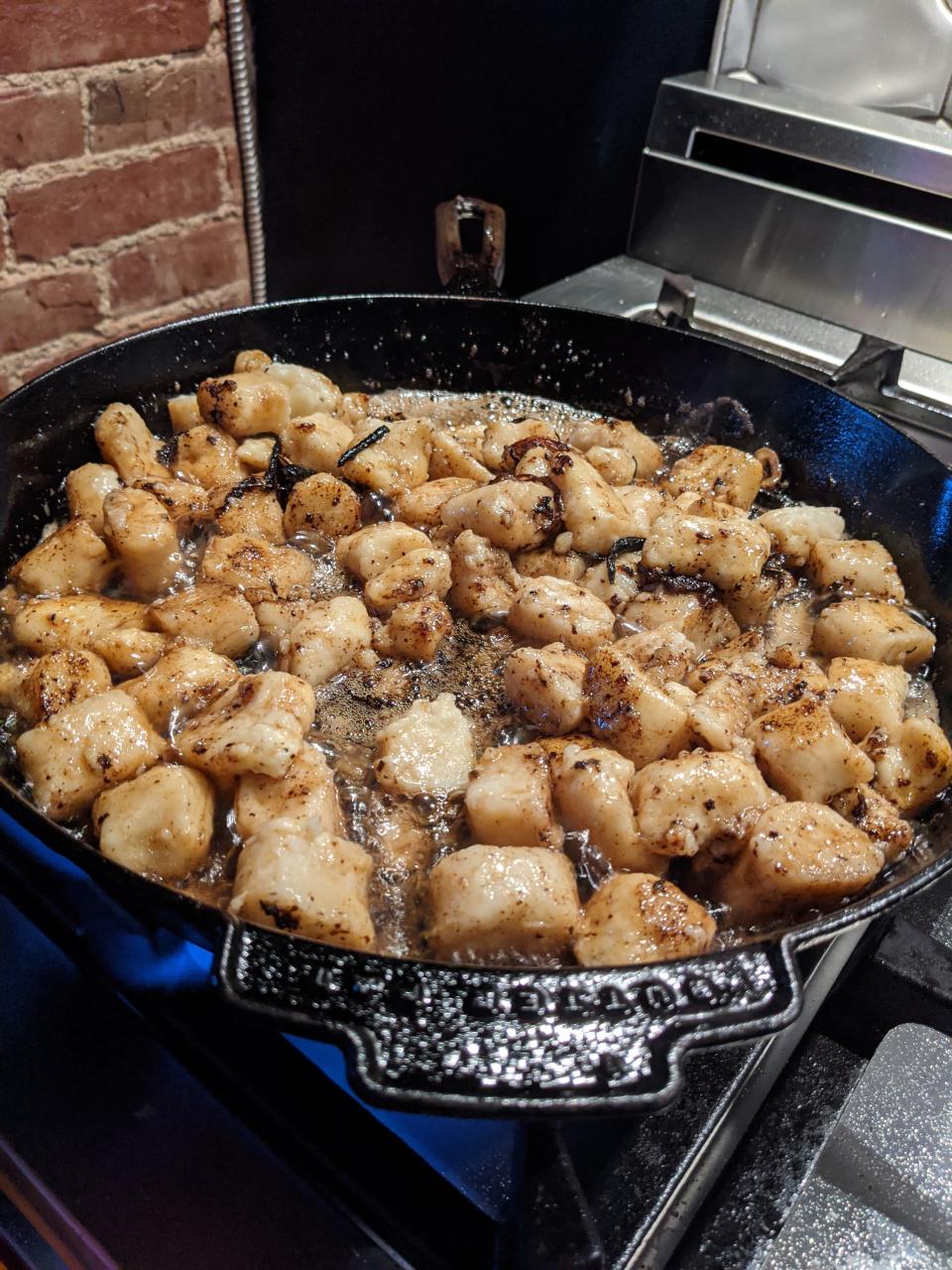How to make really good gnocchi at home (it's easier than you think!)
Good gnocchi is a beautiful thing. When it’s light as air it can easily stand on its own — or provide the perfect pillowy base for a sumptuous sauce. But when it’s wrong? Heavy and leaden, bad gnocchi can’t be rescued no matter what delightful sauce you spoon over it. And it’s notoriously difficult to do right. Even after a cooking class in Italy I wasn’t able to master the art of the little dumplings, and had resigned myself to only ever having it at the (relatively few) restaurants that can do it right.
That included whichever restaurant that Louisville, Kentucky-based chef Dallas McGarity happened to be working at. As he moved around the culinary scene in bourbon country, one thing remained constant: his locally — and rightfully — legendary gnocchi. Now the chef and owner of the Fat Lamb and Portage House, McGarity first learned to make the Italian speciality while working on pasta dishes in South Carolina, where he’d attended culinary school at Johnson & Wales University.
Through untold amounts of experimentation with various types of gnocchi, including cauliflower and other vegetables, he perfected two recipes: a potato and a ricotta version.
He shared the recipes and technique with me in person back in the days when we took for granted having people come to our kitchens, and it was the gift that keeps on giving, because now I can have restaurant-level gnocchi anytime I want.
Both versions are deceptively simple — which, of course, the best and the hardest to master dishes sometimes are. It just comes down to using your culinary judgment, McGarity told TODAY Food.
“Well, I think a lot of people are used to cooking by specific recipes, like they want a cup of flour, a cup of Parm, whatever,” he said. “And that's kind of how they make a recipe. But with gnocchi, it’s all based on touch. It's one of those things where you can follow a straight recipe, but you have to be willing to adjust.”
Related: When it comes to cooking this beloved staple, it's all about the salt and the sauce.
So how should the dough feel to the touch? “It should be fluffy and sticky at the same time,” McGarity explained. It’s a fine line. “It shouldn't be so sticky that it sticks to your hand. But it shouldn't be so dry that it doesn't stick to anything.”
Luckily, he pointed out, “it’s a pretty forgiving recipe,” and one that you can fix pretty easily. “If it’s dry you just add a touch of water. If it's too wet, you add a touch more flour.” Once it’s firm enough to roll out, you’re there, he said. Just resist the urge to keep kneading or rolling — the heat from your hand and the added processing will cause the gnocchi to become tough.
If you don’t get it perfect the first time, take heart. “It gets easier with repetition,” said McGarity. I can think of worse things than having to eat a few meals of gnocchi on your way to getting it just right.
Of McGarity's two gnocchi recipes, I found the ricotta to be the easier (and less messy), but for purists, potato is the way to go.

Dallas McGarity’s Gnocchi
Equipment and prep notes:
A pot for boiling water
A tray or sheet pan for transporting the gnocchi to the stove
Parchment paper for your countertop
A handled mesh basket (aka a spider) for scooping the cooked gnocchi out of the pot
A large bowl coated with olive oil
A fork for pressing into the gnocchi, and a sharp knife
A colander
If you make the potato version, a potato ricer (this makes all the difference, so it’s worth the small investment)
Ricotta Gnocchi
32 ounces ricotta (drained in a strainer)
1.5 cups finely grated Parmigiano Reggiano
4 cups all-purpose flour
2 tablespoons salt
Mix the ricotta, Parmigiano Reggiano, salt and 3 cups of the flour together.
If the ricotta is too wet you can add more of the flour. Be careful not to add too much and to reserve some for rolling out the dough.
Potato Gnocchi
4-5 Russet potatoes, peeled and cut
2 cups all-purpose flour per each three small potatoes
2-3 eggs (about half an egg per potato)
Salt for the pot and finishing salt
Olive oil
Boil potatoes in unsalted water until completely tender.
Remove potatoes, rice them onto parchment paper and season with salt.
Gently knead in eggs and flour. Don’t start with all the flour — go by touch until the dough holds together, but isn’t too sticky. Be careful not to over-handle it!

Cooking instructions for ricotta and potato gnocchi
Bring a pot of salted water to boil.
Allow the dough to rest a few minutes. On a cutting board, roll sections gently into long logs. Slice into bite-sized pieces and place them onto a pan (to carry them to the stove).
If you’d like your gnocchi to have ridges (the better to hold onto sauce!), lightly press each one with the tines of a fork.
Set large bowl lightly coated with olive oil near the stove.
Give the boiling water a good stir, then drop in the gnocchi in batches. The swirling water will help keep the gnocchi in motion as it cooks. Try not to stir the gnocchi once it is in the pot so as not to break it before it sets.
Cook without a lid until the gnocchis float (stay close by, this happens fast). As they finish, remove with the skimmer and drop into the bowl coated with olive oil.
Transfer to a colander to drain.
Serve as-is or with your favorite sauce. Brown butter and sage is McGarity’s recommendation for this time of year.

Try these other gnocchi recipes!
Ricotta Gnocchi with Chunky Marinara Sauce by Alejandra Ramos
Gluten-Free Sweet Potato Gnocchi by Mark Jeffers
Pumpkin Gnocchi by Ariane Duarte
Ricotta Gnocchi with Herbs by Justin Chapple

